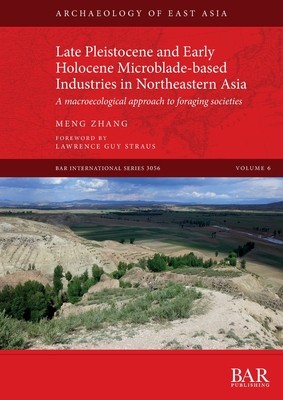
- We will send in 10–14 business days.
- Author: Meng Zhang
- Publisher: British Archaeological Reports (Oxford) Ltd
- ISBN-10: 1407358480
- ISBN-13: 9781407358482
- Format: 21 x 29.7 x 1.7 cm, minkšti viršeliai
- Language: English
- SAVE -10% with code: EXTRA
Late Pleistocene and Early Holocene Microblade-based Industries in Northeastern Asia (e-book) (used book) | bookbook.eu
Reviews
Description
The rise and fall of microblade technology during the late Pleistocene and early Holocene is not only a part of the panorama of global microlithization, but also a key question linked to human adaptive change in the face of climate fluctuation. This monograph creatively uses Lewis Binford's macroecological approach developed from his book Constructing Frames of Reference (2001) against both interglacial and glacial climate conditions, to provide an explanation of variation and change among late Pleistocene and early Holocene microblade-based industries in northeastern Asia. It uses six case studies to discuss two waves of cultural change linked with issues of the origin of microblade technology and the Palaeolithic to Neolithic transition. These cover the formation and convergence of microblade-based societies (MIS 3 to MIS 2), referring to case studies in Siberia and Northern China, and the development and ultimate divergence of microblade-based societies (MIS 2 to MIS 1), involving case studies in the Japanese Archipelago, Eastern Siberia, Northern China, and the Tibetan Plateau.
EXTRA 10 % discount with code: EXTRA
The promotion ends in 24d.00:34:37
The discount code is valid when purchasing from 10 €. Discounts do not stack.
- Author: Meng Zhang
- Publisher: British Archaeological Reports (Oxford) Ltd
- ISBN-10: 1407358480
- ISBN-13: 9781407358482
- Format: 21 x 29.7 x 1.7 cm, minkšti viršeliai
- Language: English English
The rise and fall of microblade technology during the late Pleistocene and early Holocene is not only a part of the panorama of global microlithization, but also a key question linked to human adaptive change in the face of climate fluctuation. This monograph creatively uses Lewis Binford's macroecological approach developed from his book Constructing Frames of Reference (2001) against both interglacial and glacial climate conditions, to provide an explanation of variation and change among late Pleistocene and early Holocene microblade-based industries in northeastern Asia. It uses six case studies to discuss two waves of cultural change linked with issues of the origin of microblade technology and the Palaeolithic to Neolithic transition. These cover the formation and convergence of microblade-based societies (MIS 3 to MIS 2), referring to case studies in Siberia and Northern China, and the development and ultimate divergence of microblade-based societies (MIS 2 to MIS 1), involving case studies in the Japanese Archipelago, Eastern Siberia, Northern China, and the Tibetan Plateau.


Reviews